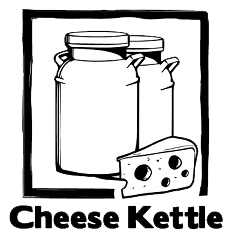Everybody like cheddar cheese. In fact, in a 2013 study, cheddar cheese accounts for about 55% of the Australian cheese market. Research also found out that each Australian consumes roughly 7.5 kg of cheddar per year. If you are a cheddar cheese lover or if you want to learn how to make cheddar cheese, then this article is for you. Here, we will show you the step by step procedure on how you can make cheddar at home.
Cheese Making Equipment:
|
|
Ingredients:
- 57 litres cow or goat milk (do not use UHT/UP milk)
- 1/8 tsp. calcium chloride diluted in 1/4 cup water
- 1 packet direct-set mesophilic culture or 1/8 tsp. bulk mesophilic culture
- 1/2 tsp. liquid animal rennet or 1/4 tsp. double-strength liquid rennet or 1/4 tablet vegetable rennet
- 2 Tbsp. sea salt
Procedure:
- Heat the milk in your cheese pot to about 30°C – stir often.
- As the milk heats up, add the calcium chloride that has been diluted in ¼ cup water.
- When the milk hits 30°C, stir the mixture in an up and down motion. Then cover and allow to ferment for about an hour. Don’t worry if it drops below 30°C.
- To homogenise the milk stir the mixture, and then carefully fold in the rennet. Continuously stir the mixture in an up and down motion with your spoon in order to make sure that the rennet works all the way through. This will ensure the best possible outcome.
- Turn off the heat source to allow the cheese to set. Leave it for about an hour. But it’s best to wait for the whey to begin separating from the cheese curd. And once you see a layer of whey floating on top of the curd, and when the curd starts pulling away from the sides of the pot, then you should be ready for the next step.
- Carefully cut the curds using a curd cutter into about a fourth of an inch cubes. Then allow it to set without stirring.
- Reopen your stove and gradually heat the curds to about 38°C. As you heat the curd, stir frequently. You will notice the curds slowly shrinking.
- Maintain the heat temperature 38°C and keep stirring for about 30 minutes. Remember to remove or turn off the heat once the curd goes over 38°C.
- Once the 30-minute time is over, stop stirring to let the curds settle at the bottom of your cheese pot.
- Transfer the curds into a colander using a skimmer. Then put the colander into the cheese pot and let it drain for about 15 minutes.
- Remove the colander and turn the curds out onto a cutting board. By this time, the curd is semi solid and looks like jelly. Pour the when out of your cheese pot, put it in a different container. Then cut the curd into 5 slices, place it back in the pot and cover.
- Heat water to about 39°C and fill your sink or basin with it. Put the pot and curds in it to keep the curds’ temperature to 38°C. Turn the curd slices every 15 minutes for the next 2 hours. This process is called cheddaring, which will help give your cheese a unique flavour.
- When the curds become firm and shiny, remove it from the pot and cut it in to half-an inch cubes. Then put them back into the pot and cover. And then put it back to the sink or basin with 39°C water.
- Using a wooden spoon, stir it 3 times every after 10 minutes.
- After which, take it out of the pot and add salt, then stir it again gently.
- Put the curds into a cheese press. Set the compression to about 4.5kg and press for about 15 minutes.
- After that, take it out of your mechanical cheese press. Unwrap it and flip it. Then wrap it again and put it in your back in your cheese press. This time, use about 18kg pressure and leave for 12 hour.
- Repeat # 17 but this time use 23kg pressure and leave for 24 hours.
- After that, take the cheese out of the press and air-dry it for 2 to 3 days or until the surface becomes smooth and dry to touch.
- Lastly, wax the cheese and age for 60 days to around 15°c to 10 10°C.
For more facts about cheddar cheese, please feel free to go through our website.
Cheese Kettle is a trusted supplier of dairy equipment in Australia. If you are looking for great advice about cheese making or if you want to start a cheese making business, talk to us. We will provide you with the best information and dairy processing equipment for cheese making.

